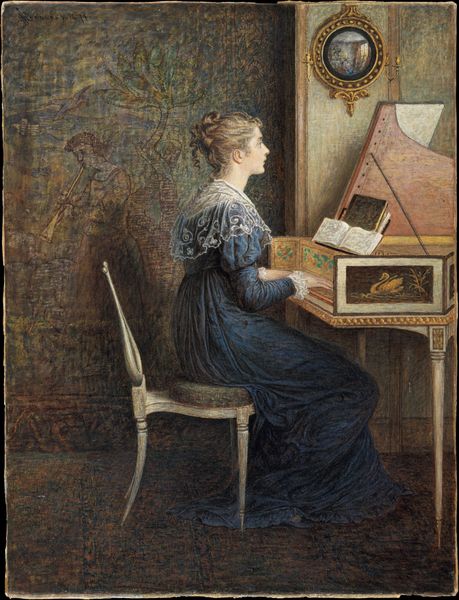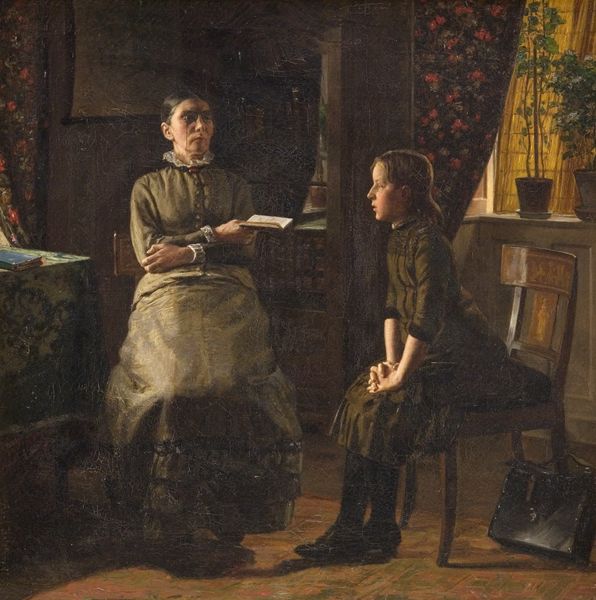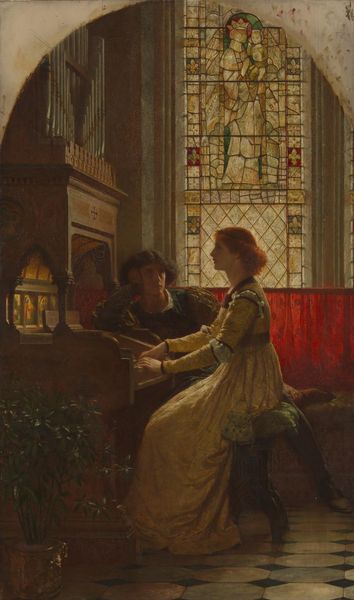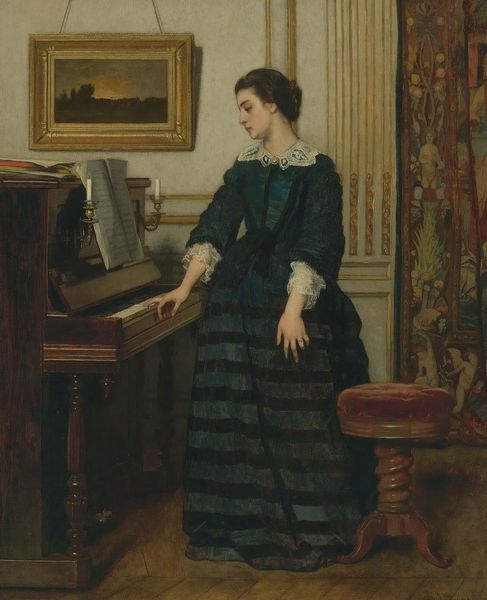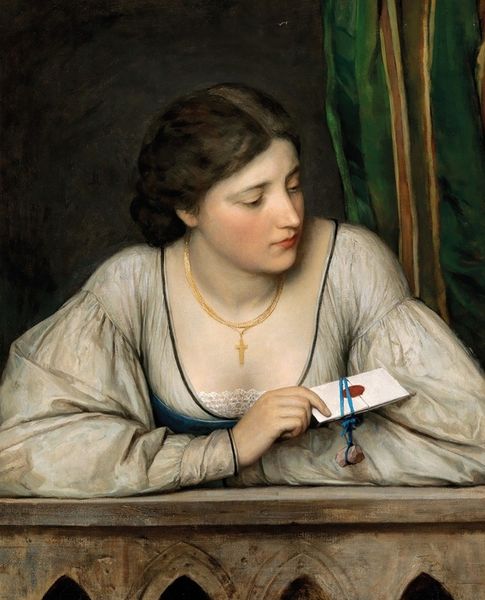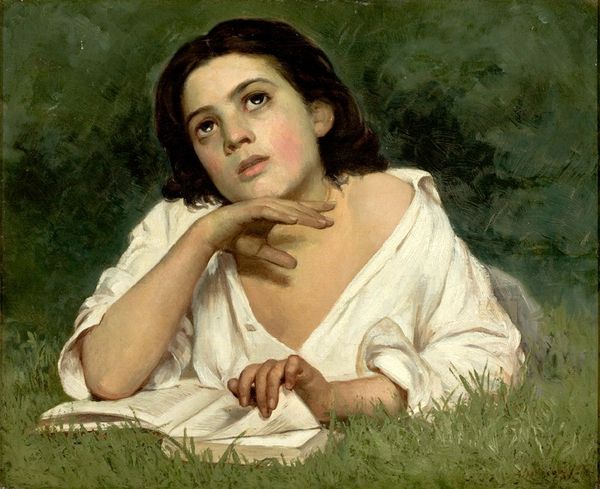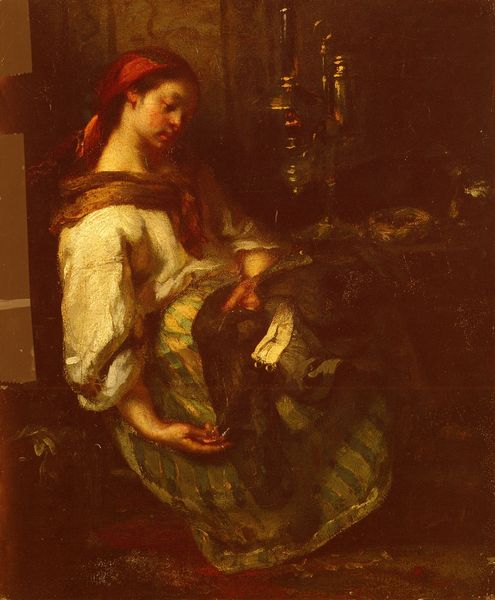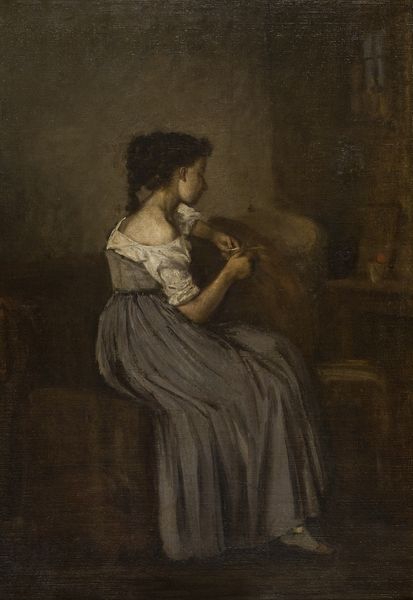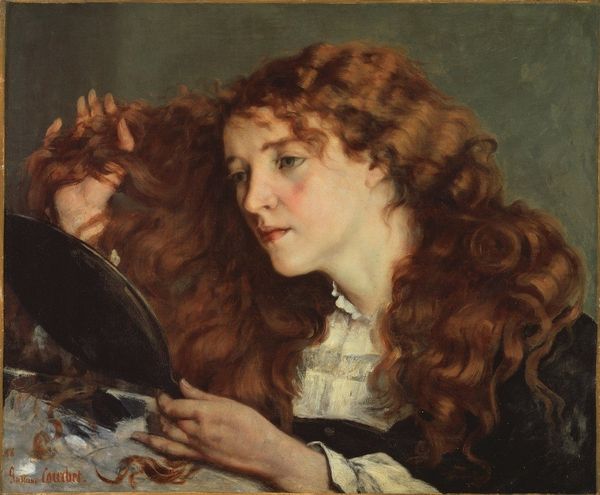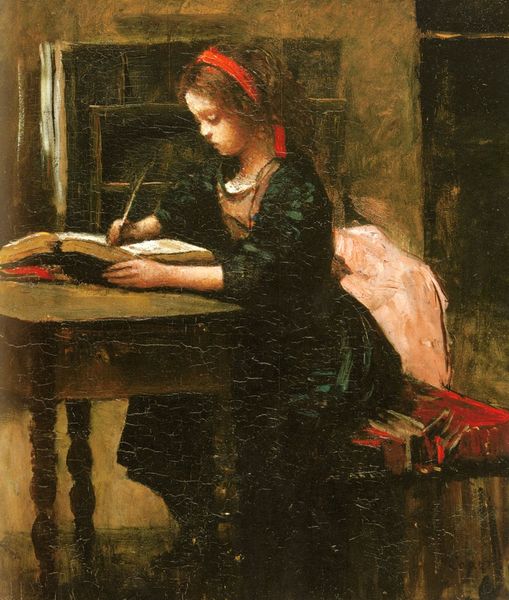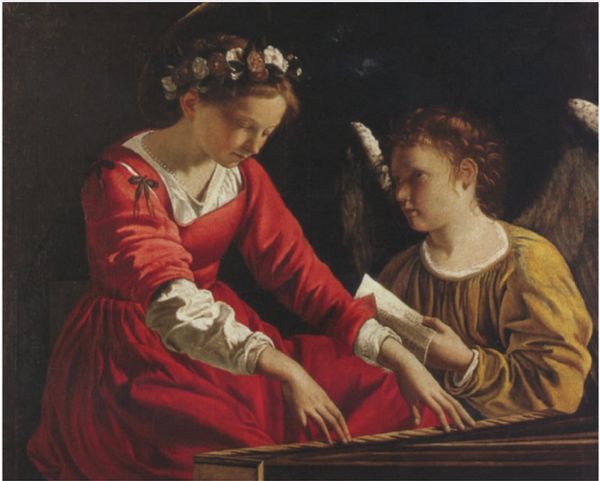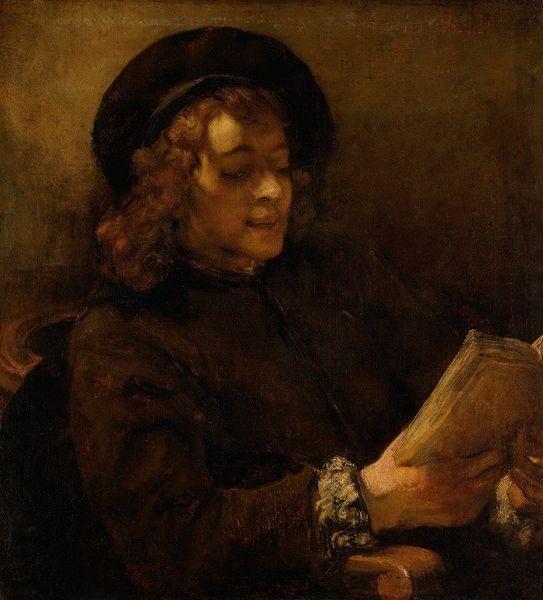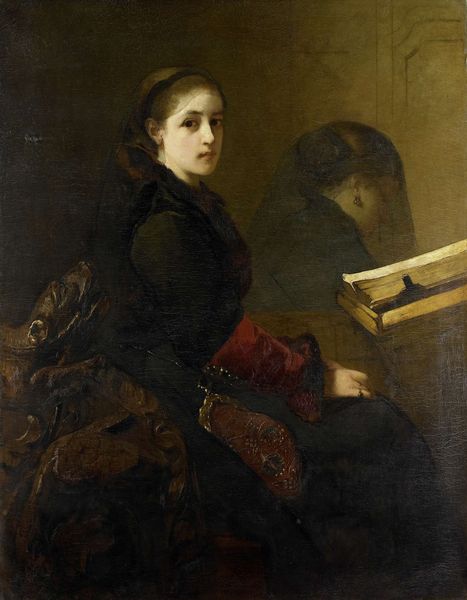
Dimensions: 56 x 51 cm
Copyright: Public domain
Editor: This is "A Day Dream," an 1863 oil painting by Edward John Poynter. There’s something so still and contained about it; she looks almost trapped in her own head. How do you interpret this work? Curator: Notice the subject's carefully rendered form. The artist’s meticulous control over line and light gives the painting a compelling visual structure. What role do you think the adjacent piano plays within that structure? Editor: I suppose the piano mirrors the composition. Its horizontal lines echo the woman's stillness. But what's the meaning of that stark contrast between light and shadow? Curator: Observe the precise rendering of textures: the smooth piano keys, the soft fabric of the dress, the pages of the book. These details guide the viewer's eye, creating a spatial organization where each object, from the vase on the piano to the cross around the subject’s neck, exists as a distinct plane in carefully orchestrated dialogue with the others. Editor: So, are you suggesting it is an intentional study in composition? Curator: Indeed. Focus on how these objects interact. See how each contributes to the whole, creating a cohesive formal unity that supersedes a need for specific historical context. Ask yourself, does narrative even matter if the forms resonate with clarity and order? Editor: I see your point! So even without knowing anything about Victorian society, one can still appreciate the interplay of shapes, colors, and textures? Curator: Precisely. The artwork invites analysis, revealing its secrets through careful observation of its inherent visual qualities. Editor: Well, now I know how to begin looking at the relationships between line, shape and tone. Thanks for helping me focus on how these things add structure and meaning.
Comments
No comments
Be the first to comment and join the conversation on the ultimate creative platform.
